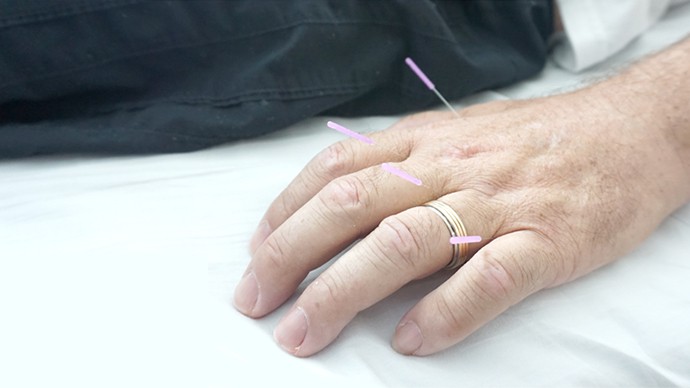Acupuncture has the benefit of influencing most systems in the body, including cardiovascular, nervous, immune, digestive and endocrine systems. It is an ancient form of Chinese medicine spanning back to 3000 years ago. Acupuncture is most commonly administered by inserting thin, sterile metal needles into specific points, called acupuncture points, on the body. Other methods used in our ward for the beneficial effects of acupuncture include applying heat, massage and pressure on to these same points.
How does Acupuncture work?
Acupuncture improves and promotes the natural self-healing pathways in the body by working with “qi”, or energy, along specific pathways called meridians. Free flow of qi keeps the body in a healthy state, whereas if the flow of qi gets blocked, then ill health can occur. Acupuncture works to unblock and ease the flow of qi back to its original state.
There have been studies published that acupuncture aids in stem cell survival, mobilization, differentiation and proliferation. These studies are listed below, at the end of this article. These publications suggest that acupuncture could have the effect of neurogenesis, especially for those with spinal cord injuries.
Science has hypothesized the existence of a new anatomical system in the body called the Primo-Vascular system (PVS) that follow the same pathways of a meridian, that has been long documented in the history of Chinese medicine. This system spans the length of the full body and allows communication between oneself and the environment. It is said that the liquid that flows through this system aggregates to form stem cells, and also carries energy, (which could be the basis of qi) whereby information is passed through as biophotons (electromagnetic waves).
What Happens in an Acupuncture session?
Your acupuncturist at the ward will already know about your health history prior to your first consultation. They will ask to see your tongue to examine the coat, shape, and colour as well as feel your pulse on both wrists to come up with a comprehensive point prescription. Patients are to lie down on their front or back whilst undergoing treatment. Treatment can last from 10 to 30 minutes long.
References:
Ho TJ1, Chan TM, Ho LI, Lai CY, Lin CH, Macdonald I, Harn HJ, Lin JG, Lin SZ and Chen YH.
Ying Ding, Qing Yan, Jing-Wen Ruan, Yan-Qing Zhang, Wen-Jie Li, Yu-Jiao Zhang, Yan Li, Hongxin Dong and Yuan-Shan Zeng
The Primo Vascular System as a New Anatomical System
Miroslav Stefanov, Michael Potroz, Jungdae Kim, Jake Lim, Richard Cha and Min-Ho Nam




 English
English